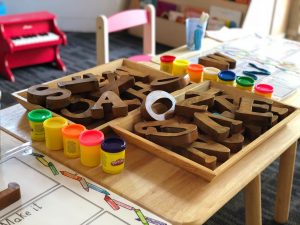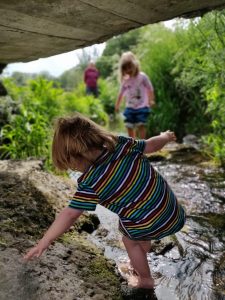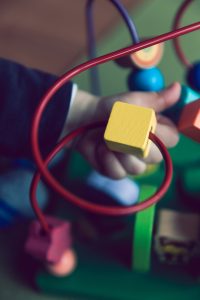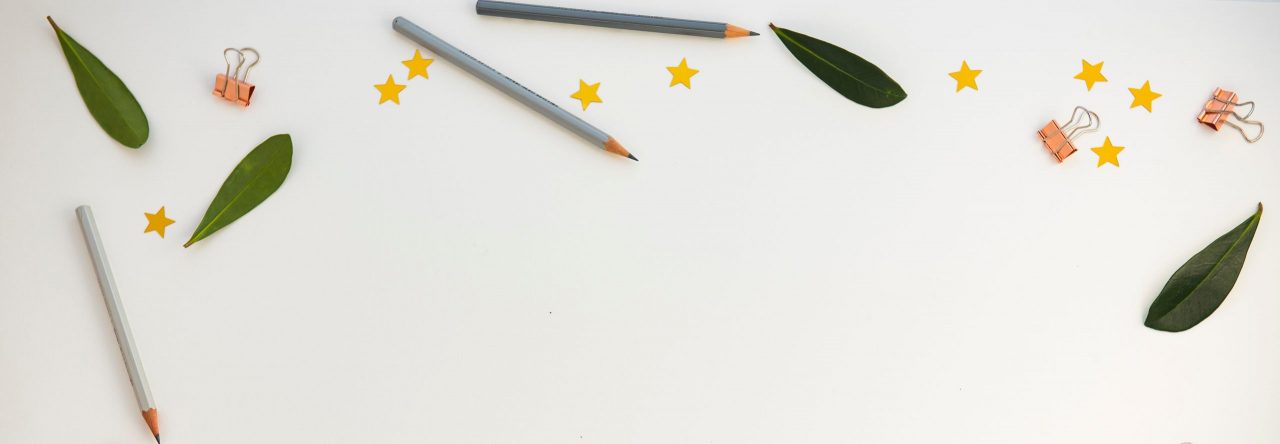Last week we went to Rebecca Bathurst-Hunt’s Kindergarten classroom to learn more about her Inquiry approach to teaching Kindergarten.

Photo by Mark Spitse on Unsplash.
Here are some of the key points I jotted down during our visit.
- We must support students in the things they are passionate about – be flexible and find ties to the curriculum with what your students are interested in. Rebecca really emphasized getting to know your students and making strong relationships with each of them so that this personalized learning can occur. This in turn will make each year of teaching unique, keep you on your toes and also makes sure each unit is tailored to your unique group of learners. For example, her class is doing an inquiry unit on Dinosaurs right now because a lot of her students showed great interest in that topic.
- Your classroom layout is important. Rebecca’s classroom layout was beautifully Reggio Emilia style and created an environment that was very much conducive to learning featuring pictures of the kids everywhere, wooden/natural material toys, natural material decorations, natural lighting, a class pet (a fish named Elsa Bubbilies), and many other things that created systems and structures that allow Rebecca to teach in a calm, organized fashion.
- The three questions for inquiry-based learning are what do you see? What do you know? And what are you curious about? These questions are really effective for inquiry in Kindergarten all the way up to high school too. I can’t wait to find ways to incorporate these questions into my practicum teaching middle school in Sweden.

Photo by Gautam Arora on Unsplash
- They have a great emphasis on outdoor experiential learning with their weekly trips to the garden. They also go on regular field trips and Rebecca teaches in a flexible way that promotes inquiry “when it snows go outside – don’t shut the blinds!”
- Provocations can be a video, a picture, a book, a display of toys, an “artifact” — anything that students can touch, feel, smell, taste, or see. Provocations can help students begin to wonder and answer the three questions for inquiry based learning outlined above.
- Have many books in the classroom that promote inquiry and curiosity such as the Ada Twist Scientist series.
- Rebecca promotes the use of the Padlet app and the FreshGrade program which both allow the uploading of videos, voice recordings, images, and text. It is a useful tool for student work to be documented in a way that both the teacher and parents can see.
- The toys in her classroom were beautiful and she got them at thrift stores, garage sales, Tidal Toys, and Dilly Dally Toys (Grapat, Grimms). She said she bought them all with her own money over the course of teaching for nine years. One thing that may not be realistic for us when we are new teachers is to have a stunning set up with beautiful toys and chairs and tables like this if we are not willing to spend a lot of money in one go.

Photo by Markus Spiske on Unsplash
- Finally, Rebecca emphasized that you must instill a love of reading in your students while they are at school because they may not always be read to at home, they may get lots of screen time instead. She went on to maintain that technology/screen time at school can be supplementary to effective learning but it needs to be purposeful.

Leave a Reply
You must be logged in to post a comment.